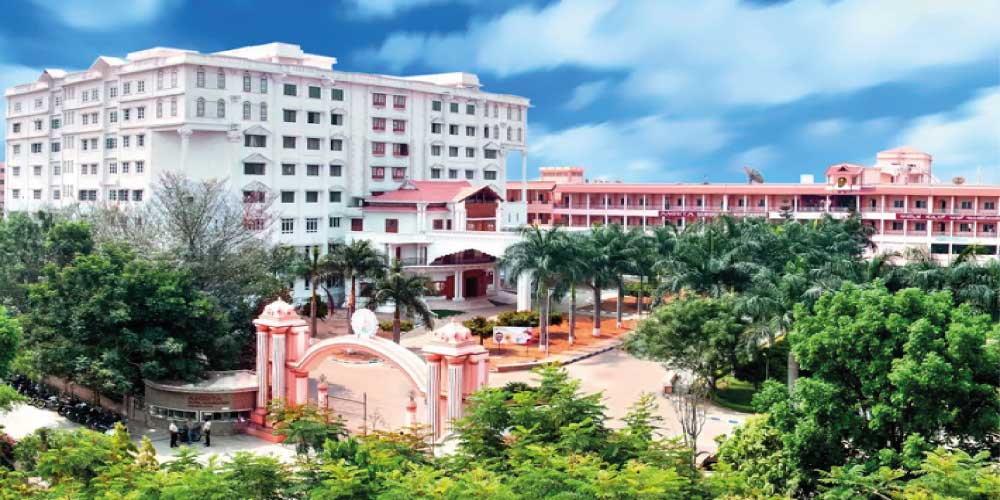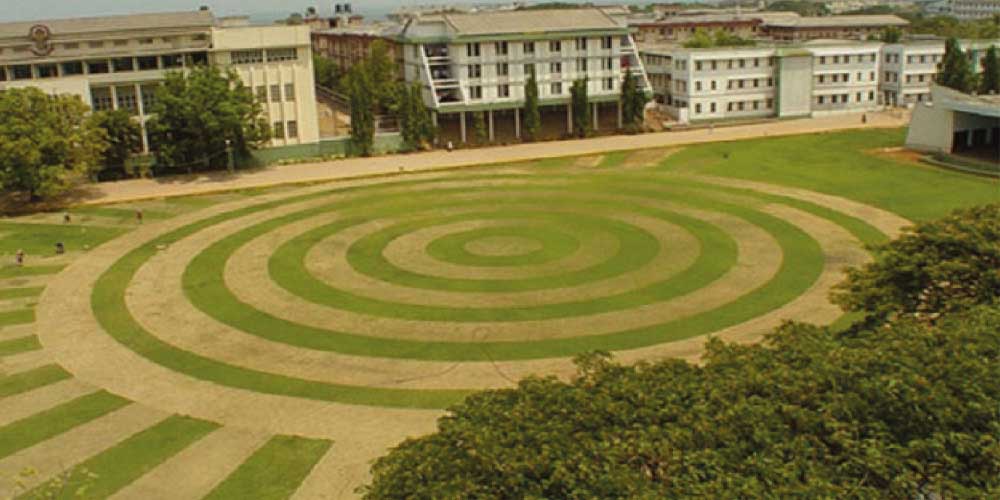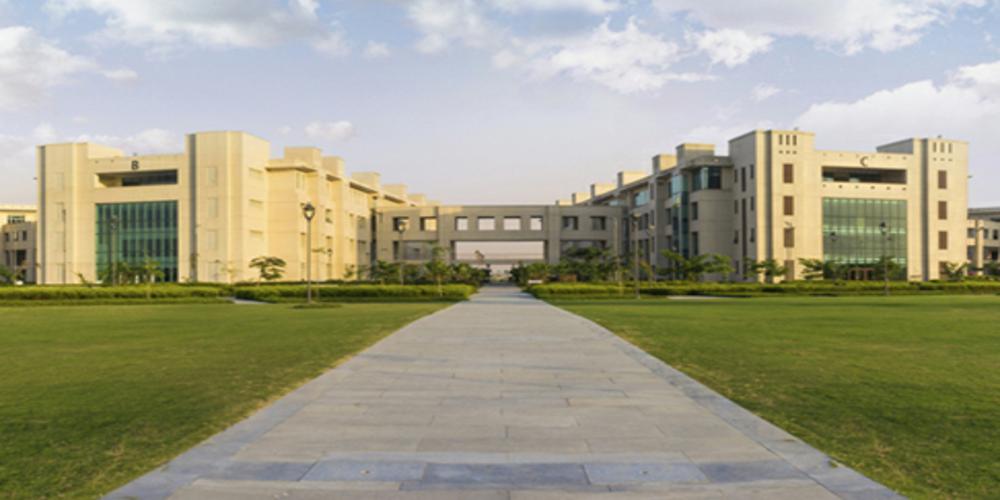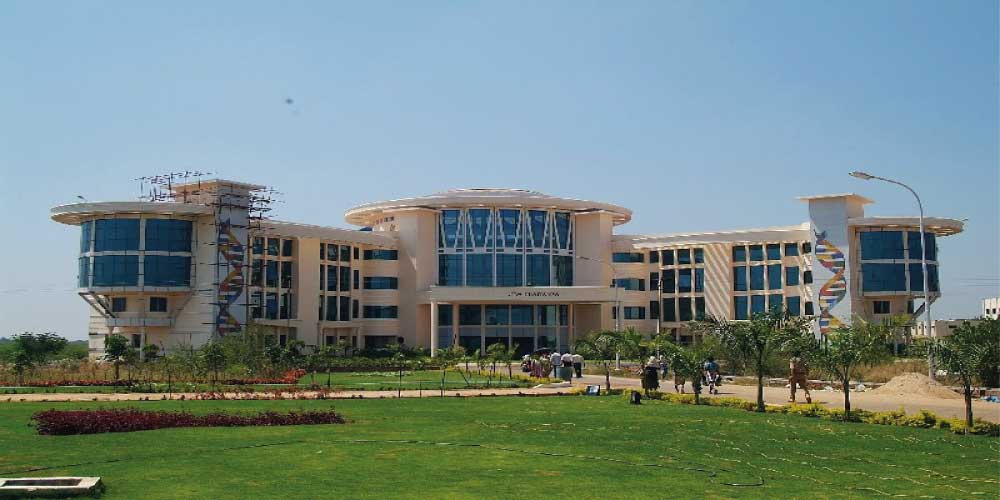
Sastra University
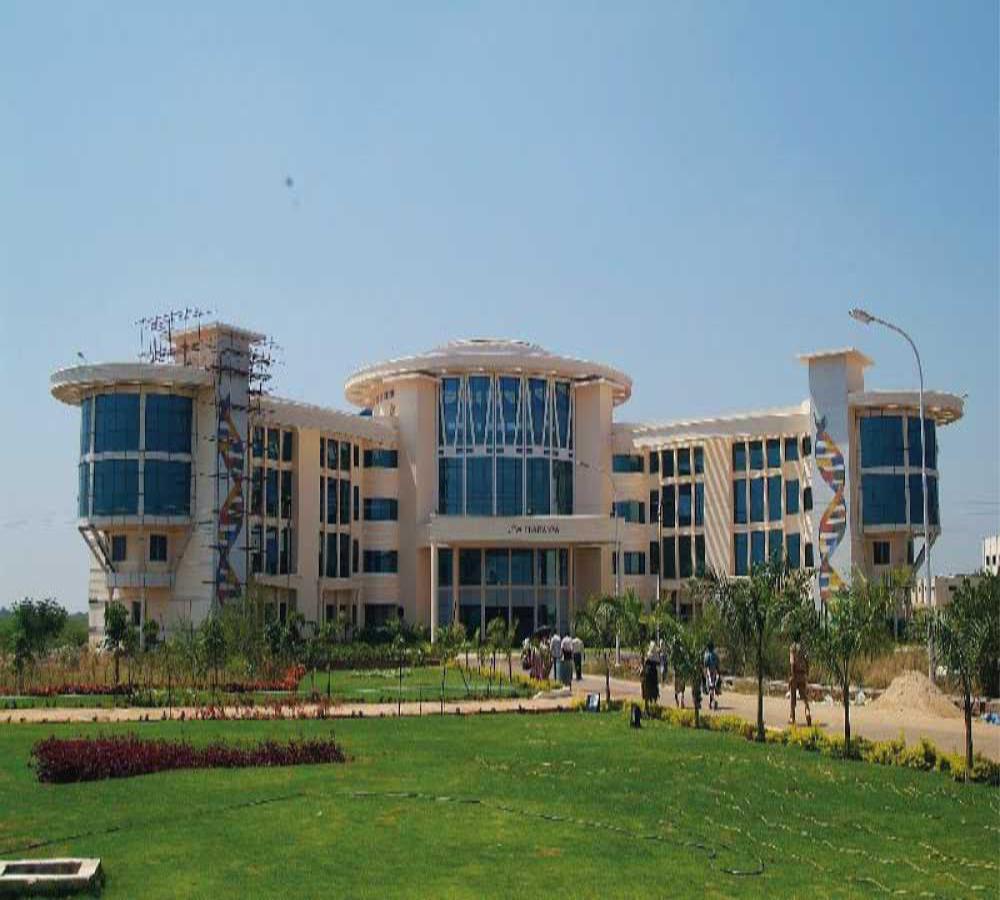
1.About University
Sastra is one of the best universities in India offering both UG & PG courses. The University was initially established as Shanmugham Engineering College in 1984 by Ramachandra Iyer, affiliated to the Bharathidasan University, Trichy. In 2001 it was renamed as Shanmugha Arts, Science, Technology & Research Academy. It was the first institution to get the ‘Deemed University status’ in Tamil Nadu. Srinivasa Ramanujan Center at Kumbakonam is attached to it.The Shanmugha Arts, Science, Technology & Research Academy, also known as SASTRA, is a Deemed-to-be university in the town of Thirumalaisamudram, Thanjavur district, Tamil Nadu, India. SASTRA has always been proactive in its academic planning and believes in gaining the first-mover advantage. As a testimony to this, the Government of India has conferred the University status to SASTRA on April 26, 2001, under section 3 of the UGC Act, 1956.
With a sprawling campus having a built-up area of 2,22,129.02 square metre spread over 232 acres and a vibrant population of over 10,000 students and over 700 teaching faculty have made SASTRA a landmark in the educational map of India. SASTRA has eight schools, two centres and a directorate of distance education offering undergraduate, postgraduate and research programmes in science, engineering, medicine, education, arts, law and management. Technology Business Incubator at the university provides expertise in 3D printing, robotics and Internet of Things (IoT). Sastra offers around 119 programmes in 10 streams for over 40 specializations.
2.Regulating Body of the University
- Founder & Chairman: MS Swminathan
- Vice chairman: Dr. S. Viadhya Subramaniam
- Registrar: Dr.R.Chandramouli
3.Accreditations
- NAAC Accreditation for 3rd time consecutively.
- TCS Accreditation
- WIPRO Accreditation as Trusted Academic Partner
- Institution of Engineers Accreditation
4.Campuses
Thanjavur Campus: 1984 :
SASTRA offers various undergraduate and postgraduate courses in Engineering, Science, Education, Management, Law and Arts besides various Doctoral programmes and has state-of-the-art laboratories, a well-stocked library and one of the best computing facilities. With a sprawling campus having a built-up area of 2,22,129.02 square metre spread over 232 acres and a vibrant population of over 10,000 students and over 700 teaching faculty have made SASTRA a landmark in the educational map of India.
Srinivasa Ramanujan centre: November 2000:
Srinivasa Ramanujan Centre have been expanded with SASTRA acquiring 10 acres of land in Lakshmivilas Agraharam and constructing a massive six storied structure encompassing an area of 1,52,523 sq.ft. Situated in the heart of the town, this building houses modern classrooms, state-of-the-art Computer laboratory, Electrical Machines laboratory, Electronics and Communications laboratory, Physics laboratory, Chemistry and Biochemistry laboratory, Mechanical Workshops and a 300 – seater air-conditioned auditorium. A library with over 21,000 books and more than 145 print journals in addition to a free 2Mbps Internet access caters to the requirements of students and staff members. House of Ramanujan Mathematics, a museum on life and works of the Mathematical prodigy, Srinivasa Ramanujan, also exists on this campus. SRC has been dedicated to the Nation by His Excellency Dr A.P.J. Abdul Kalam, President of India.
SRC Kumbakonam:
SASTRA’s off campus centre at Kumbakonam known as Srinivasa Ramanujan Centre (SRC) is a fitting tribute to the great Mathematician, Srinivasa Ramanujan, who spent most of his formative years in this temple town of Kumbakonam.
5.University Rankings
| International | QS | 351-400 |
| International | Brics | 300 |
| National | NIRF ( Overall) | 54 |
| National | NIRF ( Universities) | 36 |
| International | University Rankings | 350 |
| Asia wise | QS | 400 |
| Subject wise (Engineering) | NIRF | 33 |
6.Courses Offered by Sastra
SASTRA offers UG, PG & Doctorate courses in 10 streams & 40 specializations
- BA English (BED.)
- Com. (Finance)
- Com. (Computer Applications)
- (Maths) (BED.)
- BSC (Physics) (BED.)
- Tech (Aerospace Engineering)
- Tech ( BioEngineering)
- Tech ( Bio-Informatics)
- B Tech (Biotechnology)
- BTech ( Chemical Engineering)
- BTech ( Civil Engineering)
- BTech ( CSE)
- BTech (EEE)
- BTech (Instrumentation)
- BTech (ECE)
- BTech ( CSC)
- BTech (Mechanical)
- BTech ( Mechatronics)
- BTech (IT)
- BA (LLB)
- BCom(LLB)
- BBA (LLB)
- MTech(Manufacturing)
- MTech(Automobile)
- MTech(Bioinformatics)
- MTech (Biotechnology)
- MTech(Chemical Engineering)
- MTech(Communication Systems)
- MTech(ConstructionE&M)
- MTech (Instrumentation Control)
- MTech (Medical Nanotechnology)
- MTech(Power Systems)
- MTech(Structural Engineering)
7.Seat Allotment in engineering stream
- Civil -1 20
- Mechanical – 240
- ECE- 240
- CSC – 240
- IT – 160
- ICT – 120
- EEE- 160
- IE – 120
- Bio-Technology & Bio Informatics – Remaining seats
8.Academic Flexibility
- Choice-based Credit System (CBCS) – The curriculum is designed in such a way that it provides the freedom to the students to choose courses from a list of departmental electives for earning 31 credits. In addition, the students can opt for four courses (12 credits) as open electives from a large pool of courses across Arts, Science, Technology, Law and Management disciplines
- Choice of Faculty Member – If the same course is taught by more than one faculty, the students have the liberty to register under a faculty of their choice
- Accelerated Course Registration System (ACRS) – This facilitates students to register for additional courses in order to satisfy their credit requirements through course works enabling them to devote the entire eighth semester for a quality project work in India or abroad
- Semester Abroad Programme (SAP) – This enables the students to spend one semester to pursue a research or course work in a foreign University/industry of international repute. The credits earned during this programme is transferred to SASTRA for the award of a degree
9.SASTRA Admission
Admission is purely merit-based in SASTRA. SASTRA allows admission to students who are qualified in JEE (Mains) exam & who have attained a minimum of 75% in +2 board exams.
SASTRA allows Admission in two streams:
Stream 1: In this Stream, the University allows 70% of its available seats. Applicants will be allotted seats based on JEE (Main) 2018 scores and normalized +2 marks. The weightage for JEE Main scores and +2 marks will be 25% & 75% respectively. The aggregate JEE Main score and normalized +2 aggregate will be taken together as per the weightage and applicants will be ranked based on the resultant combined score.
For example: If a student secures a JEE Main Score of 185 and normalized +2 aggregate is 95%, the combined score of the student will be (0.25*185) + (0.75*95) = 117.5
The Combined scoreS of students will be used to determine the SASTRA Rank and admission will be based on the SASTRA Rank secured.
Stream 2 Admission: Applicants under Stream 2 will be admitted based on their normalized aggregate +2 or its equivalent marks. This is for 30% of the total seats. To bring all candidates from different examining authorities/ boards into the same scale of comparison and to create a list in the order of merit, the +2 or its equivalent aggregate marks will be normalized. A first rank student of each board is considered to have obtained 100% mark and the aggregate mark of all other students of the board is normalized with reference to that of the first rank student. For example, if the first rank is 97% and an applicant’s aggregate is 90% then the applicant’s normalized percentage is 92.78 (90/97×100). A merit list is drawn based on the normalized percentage for making admissions for 30% of the total seats.
10.Time table
| Event | Commencement (Jan JEE) | Commencement (April JEE) |
| Last date of Application | 2nd week of Sep | 1st week Feb- 2nd week March |
| Last date of Fee payment | 2nd week of Oct | 1st week Feb- 2nd week March |
| Correction window | 2nd week to 3rd week of Oct | 1st week March to 3rd week March |
| Exam Slots | 1st week to 2nd week of Jan | 1st week -2nd week of April |
| Announcement of Final Result | 3rd week of Jan | last week of April |
| NTA Score declaration | 4th week of Jan | 1st week of May |
11.Eligibility
Candidates who have passed with an aggregate of 60 % in + 2 / its equivalent exam with Maths, Physics & Chemistry subjects.
12.Application fee
Application forms will be available online from April 1st week at www.sastra.edu
It Can be paid in person from the Office of Admissions at SASTRA Deemed University campus in Thanjavur, Kumbakonam or Admin Office at Chennai. The application fee is Rs.600/-
Application forms can also be downloaded at www.sastra.edu. Applications can also be sent by post on receipt of DD for Rs.650/- favouring SASTRA payable at Thanjavur. DD must be sent to Office of Admissions, SASTRA Deemed University, Thanjavur – 613 401, Tamil Nadu. Online submission of application is also possible at www.sastra.edu.
13.Fee Structure
The fee structure varies with campuses & course that students are allotted to /selected.
All students have to pay a caution deposit of 7500 which would be included in their Hostel fee.
| Category | Btech Fee | BA LLB Fee |
| Tuition fee | 65,000/ semester | 60,000/ semester |
| Hostel Fee (Boys) | 8,000/ to 24,000/ year | 8,000/ to 24,000/ year |
| Hostel Fee (Girls) | 8,000/to 18,000/ year | 8,000/to 18,000/ year |
| Other Fees | 7,000 / student | 7,000 / student |
| Developmental Fee | 10,000/ student | 10,000/ student |
To apply for admission in the University please click on the below link


